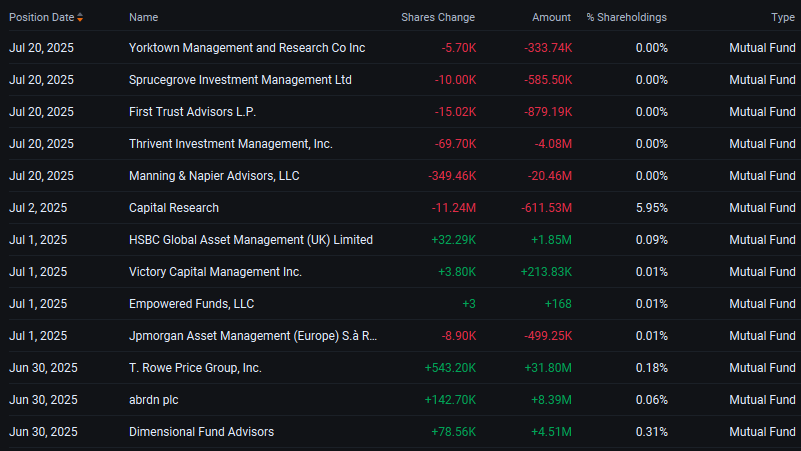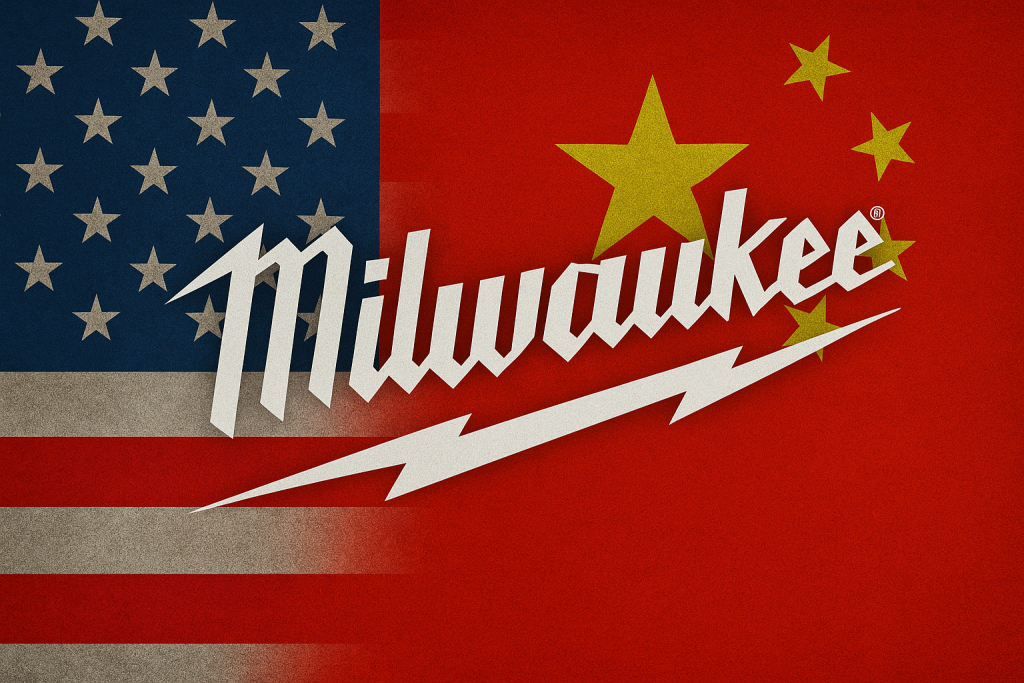This article is not intended to be a political statement or a knock against Milwaukee Tools, its users, the U.S., China, or anyone else. We’re not here to start a debate, we’re here to lay out the facts.
This is part of a new series we’re running that dives into the business side of tool brands - ownership, trade policy, tariffs, manufacturing origins, and how it all impacts pricing and perception. We get a lot of emails and DMs from our community asking for clarity on where their tools come from, what companies to support, and how global politics affect their buying decisions.
This isn’t about telling you what to think. It’s about giving you the info so you can decide for yourself.
Table of Contents
A Quick History of Milwaukee Tools
Milwaukee Electric Tool Corp. was founded in 1924 in Milwaukee, Wisconsin. Back then, it was all about building heavy-duty tools for the trades, no gimmicks, just solid gear that could handle jobsite abuse.
Timeline Highlights:
- 1918 - A.H. Peterson developed the Hole-Shooter
- 1924 – Milwaukee Tools is born
- 1930s–60s – Known for innovations like the 1/2" right-angle drill and Sawzall
- 1975 – Purchased by Amstar Corporation
- 1986 – Acquired by Merrill Lynch Capital Partners
- 1995 – Bought by Atlas Copco (a Swedish industrial giant)
- 2005 – Sold to Techtronic Industries (TTI), headquartered in Hong Kong
Since 2005, Milwaukee’s grown into one of the most dominant names in tools. They’ve launched lines like M12, M18, and MX FUEL, built out a huge cordless lineup, and pushed into pro markets like plumbing, HVAC, and electrical.
The focus shifted from just building good tools to building a platform and keeping users locked in with batteries, accessories, and new category launches every year.
Who Owns Milwaukee Today?
If you’re still picturing Milwaukee as a Made-in-the-USA, blue-collar tool company, here’s the reality:
Milwaukee Tools is owned by Techtronic Industries (TTI), a Hong Kong–based company that bought the brand in 2005.
About TTI
- Founded in 1985 and headquartered in Hong Kong
- Publicly traded on the Hong Kong Stock Exchange under ticker symbol 0669.HK
- Traded on the US Exchange - OTC as an ADR under the ticker TTNDY
Brands TTI Owns
- Milwaukee (pro-grade tools)
- RYOBI (DIY and prosumer tools, under license)
- RIDGID Tools (licensed through Emerson)
- Hart, AEG, Empire Level, Hoover, Dirt Devil, Vax, and more
They’ve built a full-stack empire, covering everything from professional contractors, to weekend warriors, to home vacuums.
So, while Milwaukee’s branding feels all-American, its ownership is 100% international, managed out of Hong Kong, manufactured around the world, and sold everywhere.
A Look at TTI’s Stock and Strategy
Stock Snapshot (as of mid-2025)
- Market Cap: ~$20–25 billion USD (varies)
- 52 Week Range - $44.44 - $78.85
- Performance: After a strong 2020–2021, the stock took hits in 2022–2023 due to global slowdown and supply chain stress. It’s made a comeback in 2024–2025, riding recovery momentum.
Strategic Focus
- Cordless Everything – M12, M18, MX FUEL platforms keep expanding with new categories like lighting, plumbing, concrete, and outdoor power equipment.
- No Corded Tools – TTI cut the cord in Milwaukee’s main lines (Following Hilti Tools move to go fully cordless) a bold move that DeWalt and others later followed.
- Aggressive IP and R&D – Patents, new tech, constant tool launches. They put serious cash into staying ahead of the curve.
- Heavy Marketing Spend – Milwaukee dominates trade shows, YouTube reviews, and online tool buzz. Their branding is everywhere.
Off the Highs and Under Pressure
TTI stock (TTNDY) is well off its all-time highs. Like a lot of manufacturing companies, they’ve had to battle through supply chain chaos, raw material costs, and shifting consumer spending post-COVID.
The stock has recovered a bit in 2024–2025, but it’s still not back to peak levels.
Now here’s the key thing:
TTI is a publicly traded company. That means shareholders expect one thing, growth. If revenue doesn’t climb year over year, big-money investors don’t sit around and hope. They sell and move on to the next hot stock.
Here are the current sales or mutual funds. (Both recent and quarterly buys & sells) and you can see what is happening with these fund. Just because they sell doesn't mean they don't like the stock, they could be selling for a variety of reasons.


That puts pressure on TTI’s leadership and by extension, brands like Milwaukee to keep the numbers climbing.
So How Do You Grow in This Climate?
Here’s the dilemma:
- Tariffs are driving up costs.
- Supply chains are still rocky.
- Tool prices are hitting ceilings.
So how do you keep revenue growing when the cost to build a tool keeps going up, but customers aren’t looking to pay double?
You’ve only got a few levers to pull:
- Cut corners on materials or components? (Not ideal for a pro-grade brand.)
- Pull back on R&D and innovation? (Kills your edge long-term.)
- Move production to cheaper regions? (Risky if it affects quality or trust.)
- Double down on marketing to keep users loyal? (Expensive.)
These are the hard choices a company like TTI has to make, not because they want to cheapen their products, but because Wall Street demands growth.
So the future of Milwaukee as a brand?
It depends a lot more on boardrooms, trade deals, and global economics than most tool buyers probably realize.
How TTI Built Milwaukee Into a Powerhouse
Back in the '90s, DeWalt was the king of the jobsite. Yellow and black was everywhere. Milwaukee? Still respected but it wasn’t the dominant force it is today. I can't find what market share they owned but it had to be under 3%, but just a guess.
That all changed when Techtronic Industries (TTI) took over in 2005.
So how did they do it?
1. Guerrilla Marketing: Flooding the Streets
TTI made sure Milwaukee Tools were everywhere:
- Sponsored tool reviews
- Showed up at trade schools
- Hosted hands-on demo events
- Pushed hard on YouTube, social, and online forums
- Got influencers and contractors in red gear long before “influencer” was a thing
They made Milwaukee look and feel like the pro's choice. And it worked.
2. R&D: Cordless Is King
They bet the farm on battery platforms, long before everyone else figured it out:
- M12: Compact 12V for service techs and light-duty trades
- M18: The bread and butter - endless expansion
- MX FUEL: Commercial-grade cordless, tools like concrete breakers, cut-off saws, pipe threaders
3. Platform Expansion
They didn’t just sell tools, they sold a system:
- Lights, vacuums, radios, heated jackets, storage, all tied to M12 or M18 batteries
- This locked users into the ecosystem, and once you’re in, switching costs are high
Milwaukee didn’t try to win you on price. They won you with convenience, speed, and loyalty.
4. Tool Drops That Never Stop
Every year and sometimes every month, Milwaukee drops new tools. Sometimes big advances and sometimes incremental. But it keeps users watching and buying.
That constant innovation builds hype, keeps shelves fresh, and drives repeat sales, which is exactly what shareholders want to see and users want to experience.
Bottom line:
TTI took a respected American brand and turned it into a global red machine. It wasn’t luck. It was smart branding, relentless marketing, and a whole lot of battery-driven innovation.
Hong Kong vs. China: The Legal Divide
A lot of people hear that Milwaukee is owned by a Hong Kong company and think, “Well, at least it’s not China.”
But here’s the reality: it’s complicated.
What Is Hong Kong, Really?
- Hong Kong is a Special Administrative Region (SAR) of China.
- It operates under a system called “One Country, Two Systems.”
- That setup gives Hong Kong its own legal and financial systems, separate from mainland China, for now.
This arrangement was part of the handover deal when the UK gave control of Hong Kong back to China in 1997.
It was agreed that Hong Kong would keep its autonomy until 2047.
The Clock Is Ticking
Technically, Hong Kong isn’t fully part of China yet, at least not in how it runs day-to-day business. But the line is blurring:
- Beijing has passed laws that tighten control over what can and can’t be said or done in Hong Kong.
- Protests have been shut down, journalists silenced, and election rules rewritten.
- Global watchdogs, trade groups, and analysts now say Hong Kong’s independence is eroding.
So while Techtronic Industries (TTI) is based in Hong Kong, the political and business environment is increasingly influenced or outright directed by China.
This matters for one big reason:
When you buy from a Hong Kong-based company today, it’s not the same as it was 10 or even 5 years ago. The red tape, the pressure, the influence, it’s growing.
The Political Reality Today
New Laws Suppress Dissent
- In June 2025, the city’s last active pro-democracy party, the League of Social Democrats, disbanded amidst overwhelming pressure following the 2020 National Security Law. This marks a major step in dismantling formal opposition
- In July 2025, Hong Kong implemented new prison rules allowing authorities to curtail visits from lawyers and religious advisors on “national security” grounds, an extension of measures used to silence political prisoners
These developments highlight how China’s chill has crept deeper into Hong Kong, affecting legal rights, political activity, and democratic institutions, all under the banner of security.
Tariffs and the Supply Chain Breakdown
Let’s get real, most folks on the job don’t think about tariffs or supply chains when they buy a tool. They just want something that works, lasts, and doesn’t cost a fortune.
But what happens behind the scenes does affect the price tag on your next Milwaukee drill.
Tariffs: Where It Started
Back in 2018, under the Trump administration, the U.S. hit China with import tariffs on a wide range of goods, including power tools and components. These were aimed at leveling the playing field and countering what was considered unfair trade practices.
That means if Milwaukee or any other brand builds tools or sources parts in China, they now pay extra to get them into the U.S.
Those added costs? They often get passed on to the customer.
Where Milwaukee Tools Are Made
Milwaukee talks a lot about their U.S. operations and yes, they do have facilities in Mississippi and Wisconsin where some tools are assembled.
But here’s what you need to know:
- A lot of Milwaukee’s components are made in China.
- Some tools are fully manufactured overseas, then shipped here.
- TTI has manufacturing operations in China, Vietnam, and Mexico.
So even if a tool is "assembled in the USA," that doesn’t mean it’s 100% American-made. And it definitely doesn’t mean it’s immune to tariffs and/or supply chain delays.
The Supply Chain Squeeze
COVID and post-pandemic global disruptions hammered the tool industry. From steel shortages to port backups to rising freight costs, it’s gotten tougher (and more expensive) to move product around the world.
And even now in 2025:
- Raw material prices are still unstable
- Shipping costs are still high
- Political tension with China is still a wildcard
That makes planning production and pricing a headache for companies like TTI.
The Math Doesn’t Lie
If costs keep going up, companies have two options:
- Raise prices (which consumers hate)
- Cut costs somewhere else, which could mean materials, R&D, or support
So when people ask why their favorite tool suddenly costs more, or why certain features seem stripped down… this is what’s going on.
Why This Actually Matters
Let’s be clear, this isn’t about bashing Milwaukee or telling anyone what brand to buy. Milwaukee makes damn good tools, and a lot of folks rely on them every day to make a living.
But if you’re spending thousands a year on gear, you deserve to know what factors are driving the price, quality, and availability of the tools you trust.
1. Ownership & Allegiance
Milwaukee Tools is owned by a company based in Hong Kong, which is increasingly influenced by China. That doesn’t mean the tools are bad but it does mean the profits go overseas, and the business decisions are shaped by a very different set of rules and pressures.
For some contractors, that matters. For others, it doesn’t. Either way, it’s worth knowing.
2. Brand Perception vs. Reality
A lot of tool brands carry a “Made in America” vibe, but when you dig into it, most are global operations:
- Milwaukee: Hong Kong-owned, mixed global production
- DeWalt: American-owned (Stanley Black & Decker), but heavily produced overseas
- Makita: Japan
- Bosch: Germany
- Ryobi: Also TTI, produced mostly in China/Vietnam
So if you think you’re buying “American” by default, think again. Branding and reality don’t always match up.
3. Industry Impact
As trade tensions, tariffs, and supply chain issues roll on, expect to see:
- Higher prices for many cordless tools and batteries
- More pressure on brands to cut costs or compromise
- More confusion over where tools are really made or supported
And for tool brands that answer to shareholders (like TTI), there’s constant pressure to show growth, even if that means cutting quality, reducing R&D, or hiking prices.
That affects all of us.
Final Thought:
We’re not here to make you change brands. We’re here to give you the full picture that most people never hear so you can decide if it changes how you buy, invest, or talk about the tools you use.
Conclusion: Facts Over Feelings
Milwaukee Tools makes some of the best gear on the market. That’s not in question. If you’ve used their tools, you know they’re built to work.
But behind every tool is a company. Behind every company is ownership, strategy, politics, and pressure.
And in Milwaukee’s case, that means Hong Kong-based TTI, a global brand navigating Chinese influence, U.S. tariffs, and economic uncertainty.
This article and this series isn’t about telling you what to buy. It’s about pulling back the curtain and showing you what’s really going on behind the logos and marketing.
We’re going to keep covering other brands too, not to stir the pot, but to answer the questions we keep getting from our audience: “Who owns what? Where are my tools made? Why are prices going up?”
Now you know. And now it’s up to you to decide if that changes anything or not.




